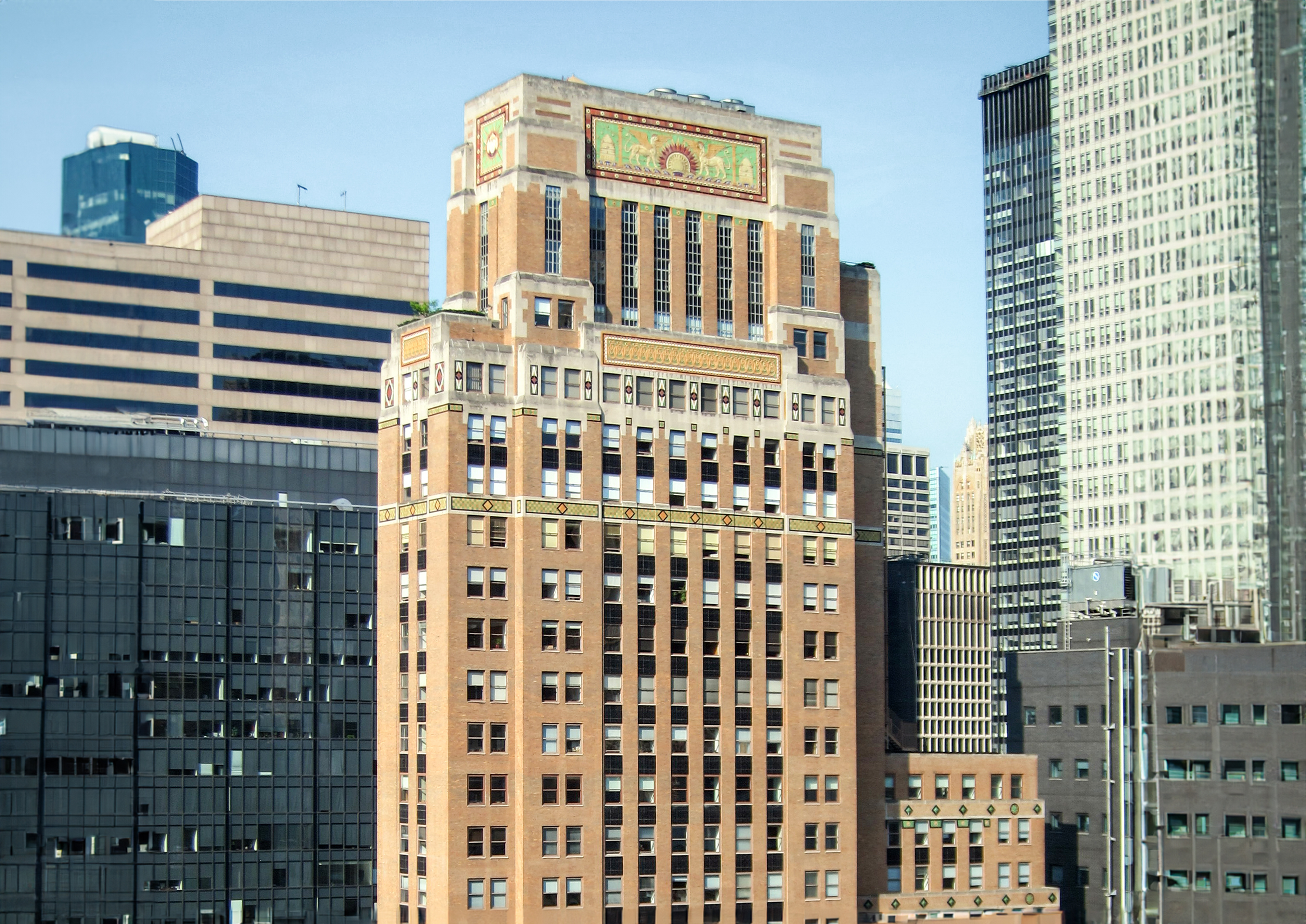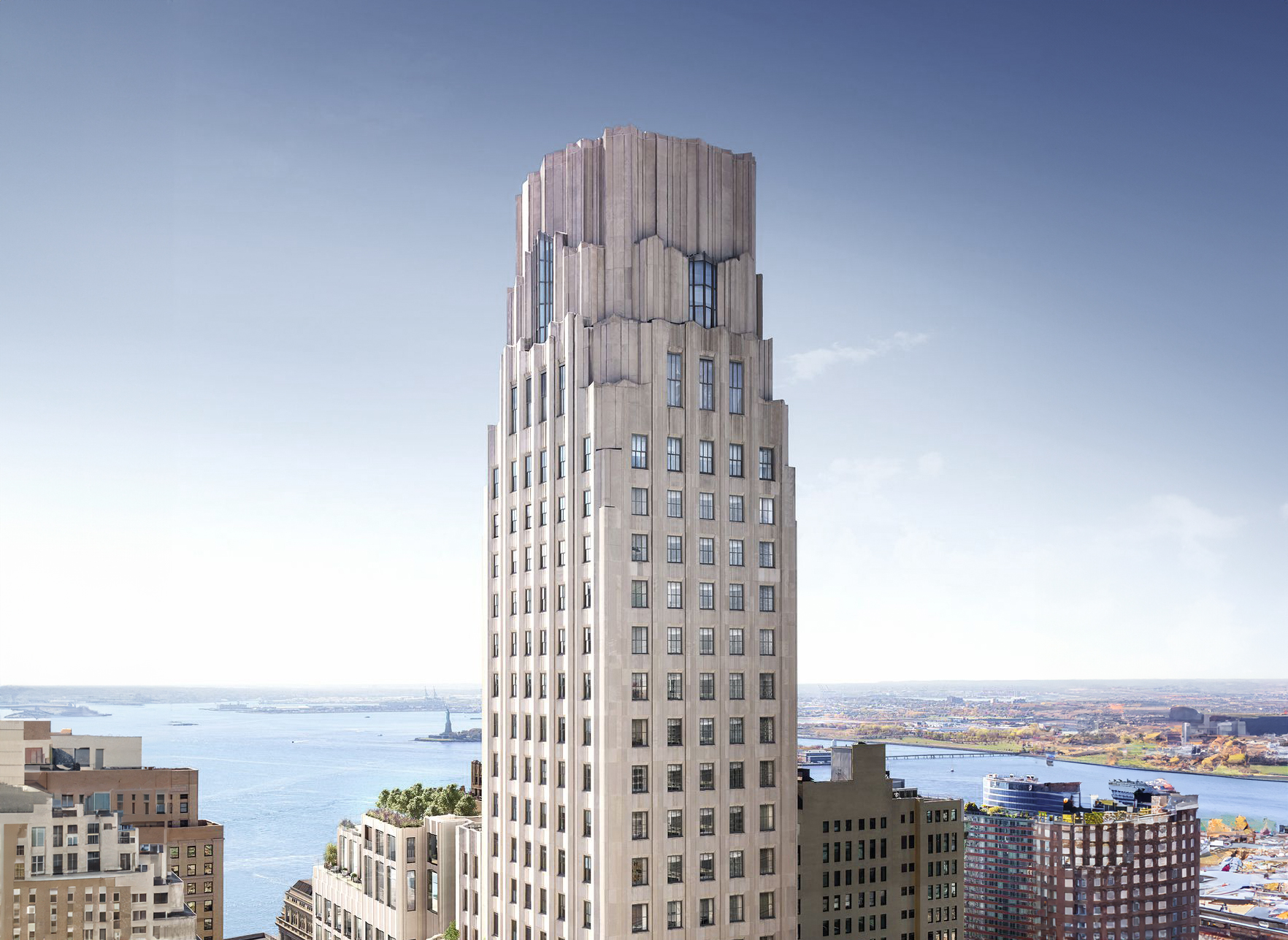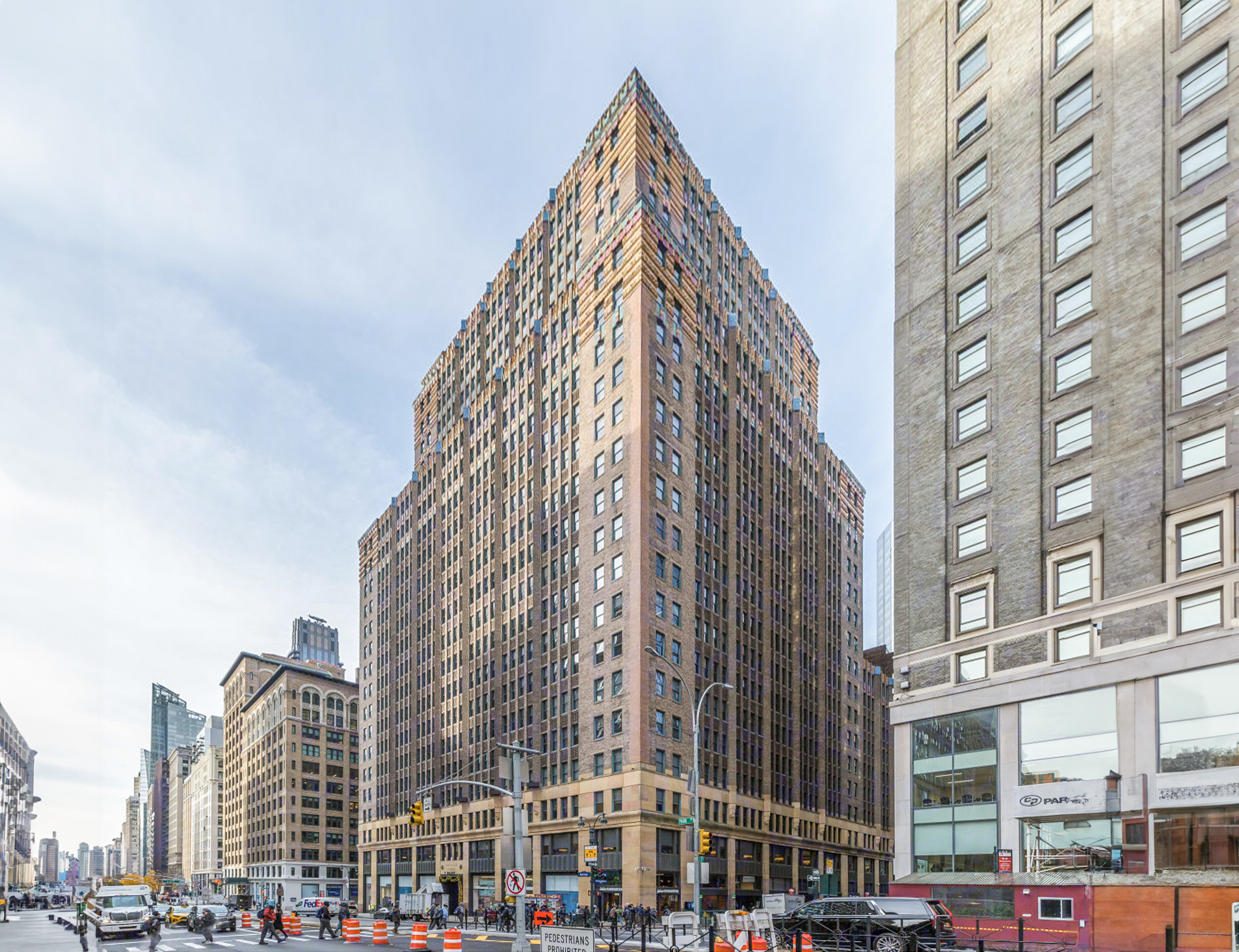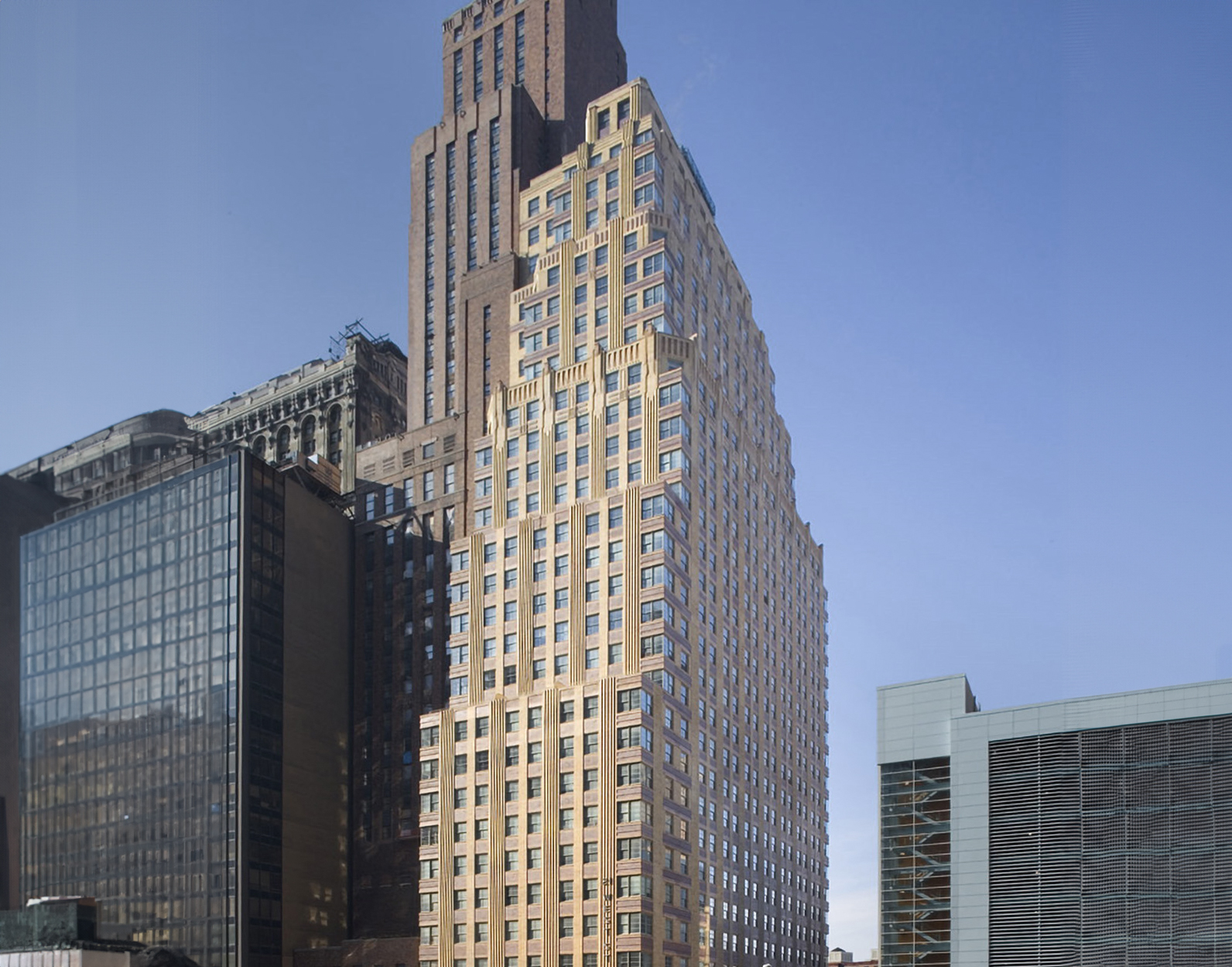The Fred F. French Building is an Art-deco skyscraper designed in 1925 by H.Douglas Ives, and built between 1926 and 1927 in New York, NY.
Its precise street address is 551Fifth Avenue, New York, NY. You can also find it on the map here.
The Fred F. French Building is a structure of significant importance both for the city of New York and the United States as a nation. The building embodies the distinctive characteristic features of the time in which it was built and the Art Deco style. Because of that, the Fred F. French Building was officially declared as a national landmark on March 18th 1986, and was included in the National Register of Historic Places on January 28th 2004.
At the time of its completion in 1927 the Fred F. French Building incorporated solutions that were quite advanced at the time, these included automatic elevators and conveniently controllable ventilation and lighting systems.
The building underwent a major restoration between 1985 and 1990. The architect commissioned to undertake this restoration was Wiss, Janney, Elstner Associates.







